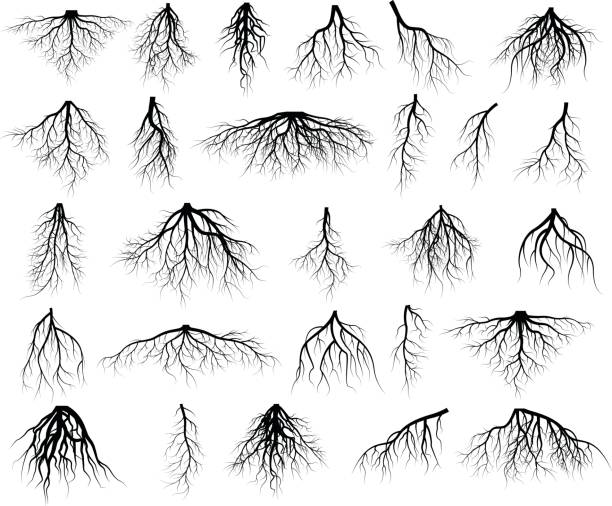
10
AprilIf Plant Extracts Is So Bad, Why Don't Statistics Show It?
There was complete inhibition (a) of all of the 4 bacteria isolates at 2 mL extract incorporation; 10 mL extract incorporation in media recorded complete inhibition (a) of three out of the five fungi isolates (Rhizopus stolonifer, Fusarium oxysporum and Penicillium marneffei and excessive inhibition (b) of the other two (Aspergillus niger and Aspergilus flavus), respectively. Addition of 1.Zero mL of extracts in the culture media was able to inhibit Pseudomonas aeruginosa and Serratia marcescens mildly (e); Erwinia carotovora and Klebsiella oxytoca had been inhibited reasonably (d), respectively; the fungi isolates however confirmed no inhibition. Addition of 7 mL recorded good inhibition of Rhizopus stolonifer, Fusarium oxysporum and Penicillium marneffei, it showed reasonable inhibition of Aspergillus niger and Aspergilus flavus, respectively. The microorganisms remoted have been five fungal species, Aspergillus niger, Rhizopus stolonifera, Botryodiplodia theobromae, Fusarium oxysporum and Penicillium marnessei and 4 bacteria species, Serratia marcesens, Erwinia carotovora, Klebsiella oxytoca and Pseudomonas aeruginosa. Incorporation of 2.Zero mL of the extract recorded complete inhibibition (a) of all of the 4 bacteria isolates (Erwinia carotovora, Pseudomonas aeruginosa, Serratia marcescens and Klebsiella oxytoca); the fungi isolates have been nonetheless not inhibited. Single plant extract recorded full inhibition of micro organism Erwinia carotovora by Terminalia catapa and fungi Penicillium marneffei by Passiflora edulis only; Pseudomonas aeruginosa and Klebsiella oxytoca recorded good inhibition (b) with Jatropha tanjorensis plant extract.
Single Eco-friendly plant extracts supplier extract inhibited utterly the expansion of three organisms by two plants: Terminalia catapa at 100% and 10−1 confirmed full inhibition (a) of Erwinia carotovora and Passiflora edulis at undiluted (100%) focus completely inhibited Rhizopus stolonifer and Penicillium marneffei. Addition of 7 mL and eight mL of extract to test media showed good inhibition (c) of Rhizopus stolonifer and excessive inhibition (b) of Aspergillius niger, Aspergillus flavus, Fusarium oxysporum and Penicillium marneffei, respectively. Plate 2. (from Left to right) Partial Inhibition of A. niger and Complete Inhibition of R. stolonifer by Synergistic Ten-Plants extract. Addition of 3.0 mL of extract showed mild inhibition (e) of Aspergillus niger and Penicillium marneffei with out affecting the other three fungi; 4.0 mL incorporation of the extract showed mild inhibition (e) of Rhizopus stolonifer and Fusarium oxytoca; moderate inhibition (d) of Aspergillius niger, Aspergillus flavus and Penicillium marneffei. Single plant extraction inhibition test (antimicrobial sensitivity check) results (Table 1) confirmed antifungal and antibacterial activity of the fresh plant leaves extracts in varying levels. All the fungi studied showed decrease inhibition with aqueous synergistic ten plants extracts at decrease concentrations when in contrast with aqueous single plant extracts and showed a gradual enhance in inhibition with increase in concentration of the synergistic extract.
 There was marked enhance in the inhibition with the addition of 5.Zero mL of the extract, exhibiting good inhibition (c) for Rhizopus stolonifer, Aspergillus niger, Aspergilus flavus and Fusarium oxysporum; and excessive inhibition (b) for Penicilium marneffei. However, the researchers noted that to profit from these results, an individual requires a excessive dose of around 2 grams of spirulina in 4 each day doses. The result is in agreement with experiences of a number of researchers who observed that, of the a number of strategies adopted for controlling losses resulting from submit harvest disease of yam; biological control technique has been most well-liked in some cases as a result of it is selective with no facet effect and cheap. Total phenolic and flavonoid contents and antihypertensive impact of the crude extract and fractions of Calamintha vulgaris. Extraction of phenolic compounds: A assessment. 6.Sritalahareuthai V., Temviriyanukul P., On-nom N., Charoenkiatkul S., Suttisansanee U. Phenolic Profiles, Antioxidant, and Inhibitory Activities of Kadsura heteroclita (Roxb.) Craib and Kadsura coccinea (Lem.) A.C.
There was marked enhance in the inhibition with the addition of 5.Zero mL of the extract, exhibiting good inhibition (c) for Rhizopus stolonifer, Aspergillus niger, Aspergilus flavus and Fusarium oxysporum; and excessive inhibition (b) for Penicilium marneffei. However, the researchers noted that to profit from these results, an individual requires a excessive dose of around 2 grams of spirulina in 4 each day doses. The result is in agreement with experiences of a number of researchers who observed that, of the a number of strategies adopted for controlling losses resulting from submit harvest disease of yam; biological control technique has been most well-liked in some cases as a result of it is selective with no facet effect and cheap. Total phenolic and flavonoid contents and antihypertensive impact of the crude extract and fractions of Calamintha vulgaris. Extraction of phenolic compounds: A assessment. 6.Sritalahareuthai V., Temviriyanukul P., On-nom N., Charoenkiatkul S., Suttisansanee U. Phenolic Profiles, Antioxidant, and Inhibitory Activities of Kadsura heteroclita (Roxb.) Craib and Kadsura coccinea (Lem.) A.C.
 Cakir A., Kordali S., Kilic H., and Kaya E. 2005. Antifungal properties of important oil and crude extracts of Hypericum linarioides Bosse. Antifungal efficacies of plant extracts in opposition to Alternaria solani (Ellis and Martin) jones and grout below in vitro condition. Allicin effectively controlled seed-borne Alternaria spp. The volatile antimicrobial substance allicin (diallyl thio sulphinate) is synthesized in garlic when the tissues are broken and the substrate alliin (S-allyl-L-cysteine Sulphoxide) mixes with the enzyme alliin-lyase. Allicin is readily membrane-permeable and undergoes thiol-disulphide alternate reactions with free thiol teams in proteins. Separation or purification may be achieved by chemical reactions utilizing appropriate reagents. Extraction methods involve separation of medicinally lively fractions of plant tissue from inactive/inert elements by utilizing selective solvents and extraction know-how (Table 1). Solvents diffuse into the strong plant tissues and solubilize compounds of similar polarity. Table 8. Cold aqueous synergistic ten plants extract inhibition check on weak spores. Hot aqueous synergistic plants extract recorded poor inhibition of the isolates as in comparison with the chilly. In a lot of the reported works, underground elements (root, tuber, rhizome, bulb and many others.) of a plant had been used extensively compared with other above floor components in seek for bioactive compounds possessing antimicrobial properties. It can be advantageous to standardize methods of extraction and in vitro antimicrobial efficacy testing so that the search for brand new biologically energetic plant merchandise might be more systematic.
Cakir A., Kordali S., Kilic H., and Kaya E. 2005. Antifungal properties of important oil and crude extracts of Hypericum linarioides Bosse. Antifungal efficacies of plant extracts in opposition to Alternaria solani (Ellis and Martin) jones and grout below in vitro condition. Allicin effectively controlled seed-borne Alternaria spp. The volatile antimicrobial substance allicin (diallyl thio sulphinate) is synthesized in garlic when the tissues are broken and the substrate alliin (S-allyl-L-cysteine Sulphoxide) mixes with the enzyme alliin-lyase. Allicin is readily membrane-permeable and undergoes thiol-disulphide alternate reactions with free thiol teams in proteins. Separation or purification may be achieved by chemical reactions utilizing appropriate reagents. Extraction methods involve separation of medicinally lively fractions of plant tissue from inactive/inert elements by utilizing selective solvents and extraction know-how (Table 1). Solvents diffuse into the strong plant tissues and solubilize compounds of similar polarity. Table 8. Cold aqueous synergistic ten plants extract inhibition check on weak spores. Hot aqueous synergistic plants extract recorded poor inhibition of the isolates as in comparison with the chilly. In a lot of the reported works, underground elements (root, tuber, rhizome, bulb and many others.) of a plant had been used extensively compared with other above floor components in seek for bioactive compounds possessing antimicrobial properties. It can be advantageous to standardize methods of extraction and in vitro antimicrobial efficacy testing so that the search for brand new biologically energetic plant merchandise might be more systematic.


Reviews